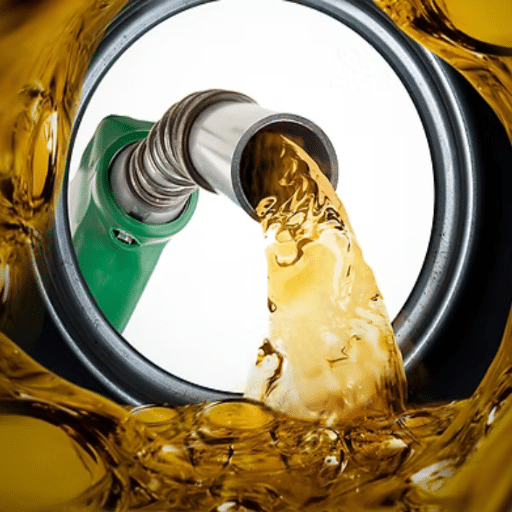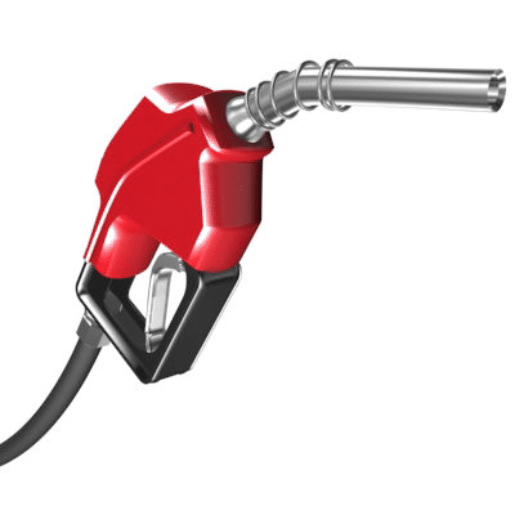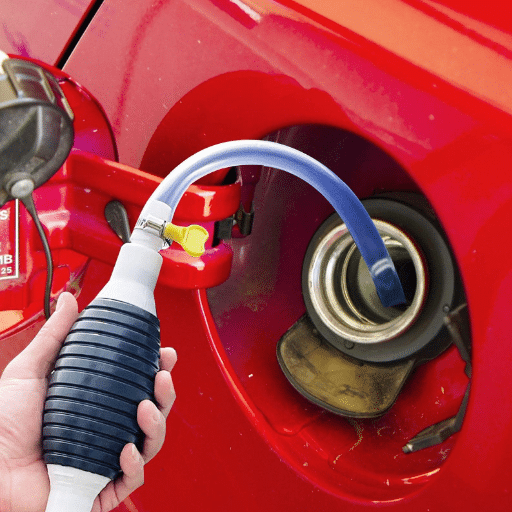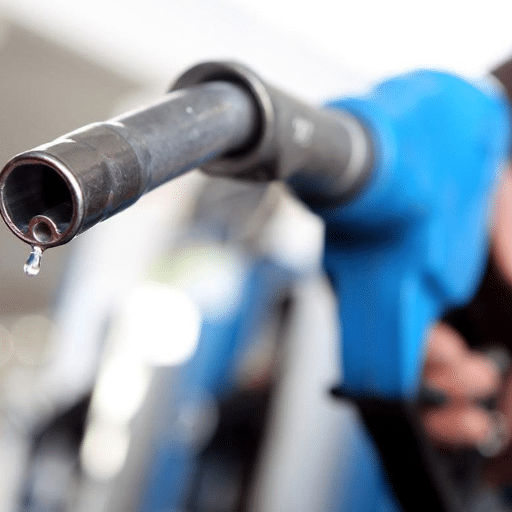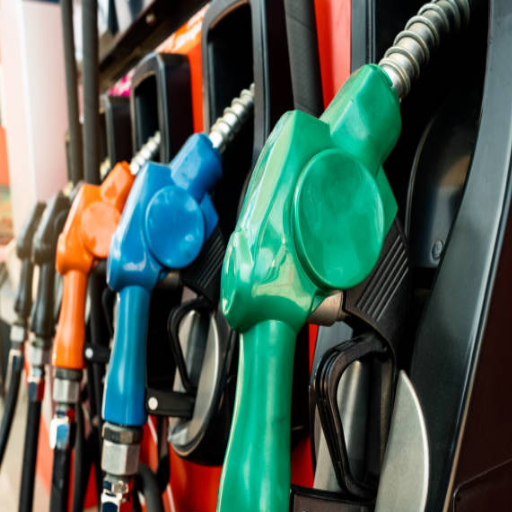Most drivers are aware of the process of refueling their vehicles, yet few consider the numerous improvements made to speed up, safeguard, and ease this process. The age of automated fuel dispensers has now arrived—an innovation that has revolutionized the gas station experience. Such fuel dispensers are not only beneficial for reducing the amount of manual labor required, but they also promote environmental sustainability, advanced technology, and efficiency. In this article, we will discuss automated fuel dispensers, their impact on the fueling industry, and the advantages they offer to businesses and consumers. Prepare to explore the innovations in refueling technology.
Understanding Automated Fuel Dispensers
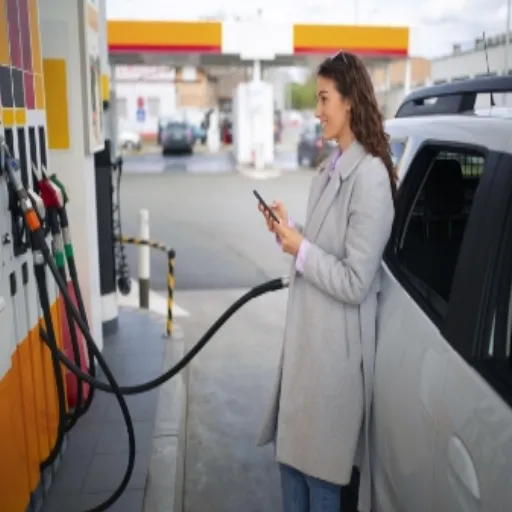
Self-service automated fuel dispensers make refueling vehicles faster and easier. They integrate customer-fuel interfaces with fuel delivery mechanisms. Payment and card processing can be completed at the fuel pump, where customers select their fuel type using a touchscreen or physical buttons. The fuel is then dispensed in the correct quantity once payment is confirmed. Having such dispensers eliminates queues, reduces errors, and enables round-the-clock service, which is beneficial to both drivers and fuel station owners.
What is an Automated Fuel Dispenser?
Fuel stations rely on Automated Fuel Dispensers (AFDs) to offer hassle-free and effective vehicle refueling. These systems operate by providing geared payments and fueling vehicles by purchasing the desired fuel type and quantity specified by the customer. Payment terminals are sometimes equipped with contactless payment capabilities, loyalty programs, and touchscreen technologies.
Industry Statistics: Recently, developed fuel stations have been reported to operate automated fuel dispenser systems in nearly 80 percent of their outlets. The fuel stations stand to gain trust from secure payment methods, such as EMV chip readers and digital wallet payments.
Furthermore, advanced dispensers can send data via telemetry systems to their head offices for fuel stock control, and with IoT technology, they can predict telemetry-based maintenance and fuel usage trends.
Automated fuel dispensers help manage fuel wastage through their accurate fuel dispensing and measurement. Some are designed to serve fleets, allowing them to monitor fuel consumption by vehicle or driver using proprietary software. Automation combined with dependability and advanced technology is revolutionizing fuel dispensing for operators and customers.
How Automated Fuel Dispensers Work
The operation of automated fuel dispensers (AFDs) integrates advanced technology and streamlined workflows to increase efficacy and convenience. Essentially, AFDs incorporate a fuel management system, payment interface, and accurate pumps. A user interacts with the payment terminal, which accepts credit cards, mobile payment apps, and RFID fleet cards, to initiate the transaction.
Fueling systems today ensure accuracy via IoT (Internet of Things) fuel dispensing control systems. The dispenser’s internal sensors track and measure the fuel quantity dispensed to ensure precise delivery, avoiding spillages or over-dispensing. Such systems are also linked to cloud hosting systems that facilitate and enable real-time communication between dispensers and operators for inventory tracking, fuel quality tracking, and operability status tracking.
Many fuel dispensers integrated with telematics systems cater to fleets and commercial users. Such systems track fueling information for each vehicle and generate reports on fuel utilization and efficiency improvements. For instance, it is shown that companies using telematics-enabled fueling systems can reduce fuel expenditures by as much as 15% due to improved vehicle routing and maintenance.
Other safety features include automated shut-off and leak detection sensors to enhance the dependability of operations. Together with advancements in contactless payments and user-friendly interfaces, AFDs are reshaping traditional refueling methods by offering a solution that is environmentally friendly, more efficient, and significantly faster.
Benefits of Using Automated Fuel Dispensers
Cost Effectiveness
Automated fuel dispensers (AFDs) allow businesses and consumers to save significantly on costs. AFDs support the reduction of operational losses through optimized fuel delivery and the reduction of fuel dispense errors. Recent studies have shown that automated systems can reduce labor costs by 30% and improve inventory management accuracy.
Enhanced Convenience
AFDs reduce the time it takes to refuel by offering faster service and allowing customers to self-serve. With many systems now supporting mobile payments, refuelling is not only quicker but also easier and more enjoyable.
Improved Safety and Compliance
AFDs have advanced safety features, including automated shutoff, pressure monitoring, and leak detection sensors. Fuel loss and environmental risks are minimized, and regulatory requirements are met, thereby safeguarding operational facilities and the surrounding community.
Environmental Sustainability
AFDs contribute to environmental preservation by reducing the likelihood of spills and waste. Additionally, some AFDs promote the use of alternative fuels, reducing waste and supporting global efforts to lower carbon emissions.
Data-Driven Efficiency
Fuel management systems that integrate with AFDs provide more advanced information systems. Such systems and reports enhance the capability to analyze and predict fuel usage, manage servicing, and fleet optimization. It is estimated that efficiency is improved by 25% with the use of such systems.
A modern fuel infrastructure demands that technology be applied to achieve cost savings, safety, convenience, and sustainability, all of which are advanced by the use of automated fuel dispensers in reshaping the fueling environment.
Features of Automated Fuel Dispensers
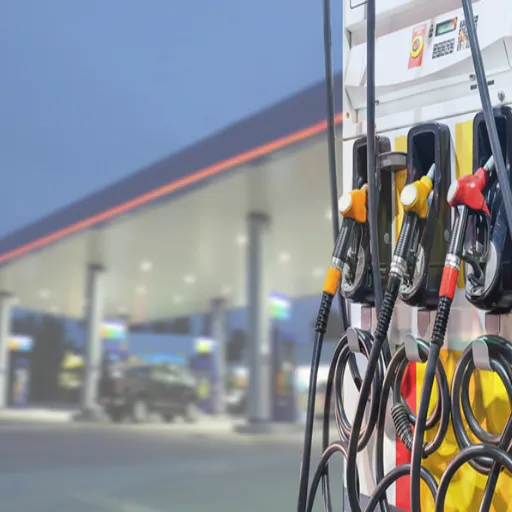
- Contactless Payment Options: Accepting credit cards, mobile wallets, and other digital payment methods enables swift and secure transactions.
- Fuel and Dispenser Tracking: Enables both personal and corporate users to monitor fuel and dispenser usage remotely.
- User-Friendly Interfaces: The fueling process is quick and accessible to all users thanks to touchscreens and simple step-by-step instructions.
- Safety Enhancements: Fueling safety is improved with leak detection and automated shut-off systems.
- Sustainability: Supports sustainability by using as little energy as possible.
Advanced Pump Technology
The technology of modern pumps embodies uninterrupted innovations aimed toward improving performance. Current fuel dispensers are outfitted with automation control systems that utilize the Internet of Things (IoT). The integration of the IoT enables the appropriate devices to communicate, allowing fuel dispensing to be closely monitored. The collected data are thoroughly analyzed in such opportunistic systems. There is also the possibility of reducing system maintenance with these systems, which not only cuts maintenance costs but also lowers idle time by 30% and even facilitates fuel dispensing.
Performance Metrics: The commercial adoption of high-flow nozzles has significantly advanced fueling speed, reaching rates of up to 40 liters per minute with maintained accuracy, which is especially crucial in commercial settings. Enhanced metering technology makes sure that the fuel dispensed is measured with a precision margin of less than ±0.25%, meeting industry-leading accuracy standards.
There is also a reduction in electricity use during fuel transfer through energy-efficient pumps, which require 20% less electricity compared to previous models, focusing on sustainability. Low-emission designs are also included, which further reduce vapor escape during fuel transfer, resulting in a lower environmental impact. These, together with other strong safety features such as automatic shut-offs and advanced fire suppression systems, position advanced pump technology as the standard in modern fueling solutions.
Fuel Nozzle Design and Functionality
Fuel nozzles today must satisfy a host of complex demands, from operational safety to ergonomics and environmental protection. Fuel nozzle ergonomics enhance ease of use and minimize the strain experienced by fuel attendants. Fuel personnel regulation is additionally protected by minimizing overflow with environmental spill prevention measures.
One of the key advancements in modern fuel nozzles is the spill-free, vacuum-activated automatic shut-off system. This system is based on fuel vacuum pressure technology that ensures that fuel flow is immediately stopped once the tank is full. Fuel vacuum technology is credited with reducing accidental spills by more than 30%, thereby enhancing fuel user protection and environmental safety.
Modern fuel nozzles also incorporate the use of advanced polymers and aluminum alloys that are not only lightweight but also provide resistance to wear and corrosion. Many of these nozzles also utilize fuel hoses with low permeation, thereby controlling discharges and meeting environmental regulations. There is compliance with fueling station regulations and environmentally friendly designs, which have led to a decrease in evaporative emissions.
Regarding operational efficiency, fuel nozzles ensure precise refuel tracking with meters that also feature locked calibration. This enables fuel retail control, which possesses high accuracy, to be trackable. Therefore, as we focus on improving user comfort and safety, we see that nozzles are easing fueling in more ways than one, thanks to technological advancements.
Automatic Shut-Off Mechanism
To prevent fuel spills, modern fuel nozzles feature an automatic shut-off mechanism, a vital safety feature. The mechanism is triggered by a small venturi system within the nozzle, which can sense variations in air pressure. Once the fuel container is almost filled, the fuel level covers the vent of the nozzle, and this triggers a change in pressure, which automatically stops the fuel from flowing.
Safety Statistics: The accuracy and reliability of this technology have recently been improved. For example, research shows that modern nozzles with improved shut-off systems can reduce spillages by over 95 percent compared to older technologies. The use of high-precision components has also led to the enhanced durability of these systems, with specific models showing operational life of greater than 1 million fueling cycles.
These advances enhance user safety during refueling and protect the environment by eliminating the possibility of fuel leakage.
Types of Fuel Dispensers in Gas Stations
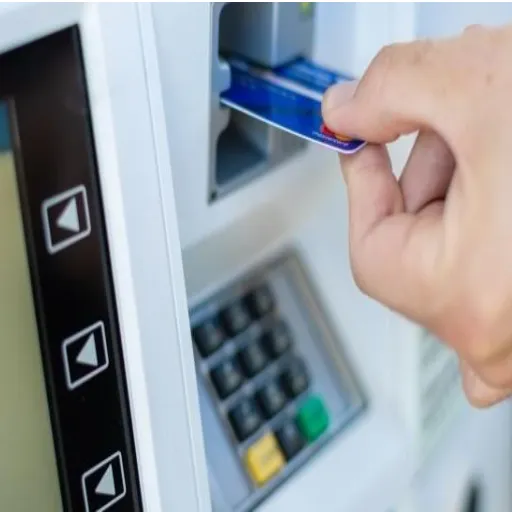
Different fuel dispensers are used in various gas stations. Here’s a breakdown of them:
| Dispenser Type | Description | Best Use Case |
|---|---|---|
| Single-Product Dispensers | These are designed to dispense a single product, such as regular gasoline or diesel. | Small stations with limited space |
| Multi-Product Dispensers | These dispense fuels to customers, which can include regular, mid-grade, and premium gasoline as well as diesel. | Standard gas stations |
| High-Flow Dispensers | These are designed for use on trucks and other large vehicles, allowing for the dispensing of fuel at a higher rate. | Commercial and fleet operations |
| Dual-Hose Dispensers | These are designed to minimize the risk of fuel mixing or contamination by separating different fuels on separate hoses. | Stations serving multiple fuel types |
| Self-Service Dispensers | Typically found in newer fuel stations, these allow customers to fuel their vehicles independently, often featuring card payment options right at the dispenser. | Modern automated stations |
Fuel dispensers of one type or the other are designed to address unique issues in their operating environment, providing the appropriate level of convenience, efficiency, and security to different kinds of vehicles and their owners.
Standard Gas Station Fuel Pumps
Gas stations continue to undergo updates for the convenience of drivers, as well as to enhance fueling efficiency and safety. Most fuel pumps feature a basic standard that includes a digital display showing the fueling price per gallon, total cost, and amount dispensed. Besides these, they can be integrated with fueling and payment systems, allowing fueling and payment through credit and debit cards without needing to enter the station’s shop.
In addition to these, gasoline pumps have fueling safety systems, such as Automatic Shutoffs to prevent overfilling and Vapor Recovery Systems to maintain environmental safety and reduce gasoline vapors released into the atmosphere. Research shows that the implementation of Vapor Recovery Systems has enabled a drastic reduction of Volatile Organic Compounds during fueling.
Standard fuel pumps can handle a variety of fuel types, including conventional gasoline, diesel, and ethanol-blended fuels. Recently, there has been a rise in the use of alternative fuel pumps such as compressed natural gas (CNG) and hydrogen-fueled pumps. This is a clear indication of the industry’s move towards sustainable fuels. There are now an estimated 17,000 gasoline stations in the United States that have installed EV charging stations on their premises in response to the rising adoption of electric vehicles. These changes indicate the efforts being made to transform gasoline station pumps to serve the needs of present-day motorists better.
Portable Diesel Fuel Dispensers
For several industries, including agriculture, construction, and logistics, the use of portable diesel fuel dispensers is now crucial, primarily due to their cost-effectiveness and versatility. Such dispensers are designed for secure fueling and are often compact and lightweight for ease of movement. The majority of current portable diesel dispensers feature electric or manual pumps, along with hoses, nozzles, and meters to ensure accurate fuel dispensing.
Market Growth: Over the next decade, the portable fuel dispenser market is expected to experience significant growth, with a compound annual growth rate of approximately 6%, primarily driven by the increasing demand for fuel and energy in remote and off-grid regions.
The latest trends in construction and design for fuel dispensers point to a technology focus. For example, filtration systems to maintain fuel cleanliness and minimize fuel wastage have become standard, as has the use of spill minimization systems. Furthermore, industries operating in challenging terrains have gained further access through the increased availability of versatile, battery-powered units. The improvements indicate an increased understanding of the importance of portable fuel dispensers in driving productivity and efficiency.
Specialized Fuel Pumps for Different Fuels
Different fuel types, including gasoline, diesel, biofuels, and aviation fuels, require specialized fuel pumps. For example, biofuel pumps require special corrosion-resistant materials and seals, which standard fuel pumps do not offer. Pumps for aviation fuels are engineered differently from other fuel pumps, as they must provide both precision and high flow rates to meet the unique requirements of aircraft refueling.
Market Projection: The global fuel pump market is expected to surpass $60 billion by 2028, as fuel usage in the transportation, agriculture, and industrial sectors rises alongside the increasing use of alternative fuels.
Moreover, fuel pump systems benefit from the incorporation of innovative technologies, as this completely changes how fuel pumps are managed and serviced. Fuel pumps equipped with IoT can be monitored in real-time for performance, serviced on schedule, and automated to reduce operating expenses and user hassles. Fuel pump innovations ensure that custom-tailored fuel pumps remain critical for industries that require a steady fuel supply.
Enhancing Efficiency at Fuel Stations
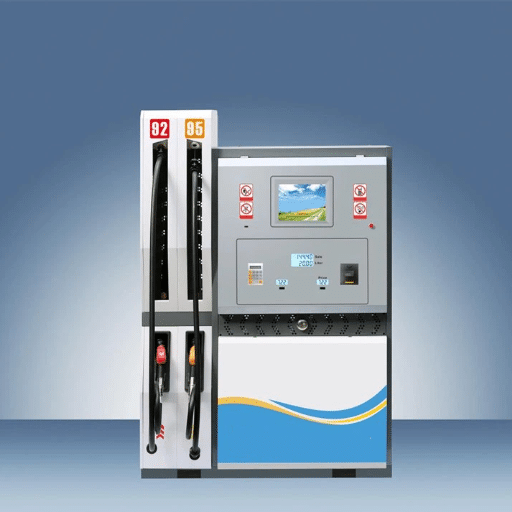
Modern fuel stations can maximize customer satisfaction and increase efficiency by adopting automation and refining business processes. Stations equipped with self-checkout machines process payments swiftly, enabling customers to spend less time in line. Scheduled servicing of fuel dispensers and storage tanks not only optimises function but also significantly enhances safety. The use of fuel dispensers and maintenance machinery, compliant to energy efficiency lighting, lengthens the life of station equipment and reduces running costs. Stations maintain their competitiveness whilst adding value to fuel station users by implementing such crucial policies.
Streamlining the Refueling Process
Fueling a car has always been a time-consuming and tedious activity as every other task on the list is waiting for one’s attention, but with the adoption of innovations in technology, it is possible to provide a convenience-oriented approach to fueling. With mobile applications and NFC-enabled card readers at one’s disposal, it is possible to complete transactions 50% faster. According to studies, fuel stations equipped with pre-payment and mobile ordering systems have shorter waiting times and are more efficient.
Another necessary upgrade is the use of digital displays on the fuel hoses. These display interfaces enable the service to reach its fullest potential by offering real-time information and updates on fuel prices and available promotions, as well as digital queue management techniques, which are known to increase customer satisfaction. Moreover, newer fuel pump technologies, including faster fuel dispensers, aid in refining catering services to customers, as they can provide higher flow rates in fuel delivery without compromising safety measures.
Maintenance Benefits: Information from industry reports indicates that an advanced maintenance routine helps reduce pump downtime, which in turn lowers the inconvenience to customers. IoT (Internet of Things) equipment monitoring enables the prediction and prevention of machinery breakdowns, aiding in the reduction of 30% in unplanned maintenance costs, which is a direct benefit to the company.
Finally, the use of solar panels for energy needs and the provision of EV chargers not only serve the needs of modern customers but also help the company steer in the right environmental direction. By utilizing these technologies, the company can enhance the efficiency of its services, reduce expenses, and provide a better experience for customers while refueling.
Reducing Wait Times with Automated Systems
Automated systems have revolutionized fuel stations in terms of managing vehicle flow and reducing customer wait times. Refueling can be made smoother and quicker through the use of advanced queue management systems and contactless payment methods. These self-service kiosks, which function during peak hours, help remove bottlenecks. In fact, fuel stations that employ self-service and automated systems stand to gain a lot. According to research, automated payment methods shorten transaction durations by as much as 40%, enabling a greater number of vehicles to pass through the station within the same timeframe.
Moreover, scheduling software powered by artificial intelligence (AI) can prepare for and handle peak traffic times, ensuring optimal use of fuel pumps, attendants, and other necessary resources. To further improve their services, some fuel stations have adopted license plate recognition technology. This method streamlines the service by recognizing returning customers and automatically activating their stored payment options or loyalty benefits. Data analytics insights enable the restructuring of station layouts to facilitate smoother movements and reduce severe bottlenecks.
Shorter wait times and more streamlined refueling services certainly enhance the convenience of fuel stations, thereby amplifying customer satisfaction and increasing the effectiveness of the stations. Automation helps fuel stations meet the increasing customer expectations for speed and convenience.
Impact on Gas Station Operations
The application of automation and advanced technology has changed the way gas stations work. Firstly, the use of automated payment systems and loyalty programs reduces the time customers spend fueling. Additionally, data-driven fuel analytics can be utilized to optimize fuel station inventory, preventing both fuel shortages and excess stock. For a third point, the use of self-service kiosks and mobile applications for payment and fuel eliminates the need for checkout personnel, dramatically enhancing the customer experience.
Automation also decreases the need for human labor, thereby lowering operational expenses. At the same time, automation enhances the precision of billing and resource tracking. The advanced security measures in automated systems safeguard against theft, fraud, and other threats. These improvements demonstrate how new technology enables gas stations to meet the needs of modern-day consumers, enhancing both efficiency and profitability.
Future Trends in Fuel Dispenser Technology

Enhanced Connectivity Supported by IoT
Internet of Things (IoT) technology will enable fuel dispensers to be connected, making it easier to communicate with stock systems and customer devices. Additionally, it will streamline operations and enable customized offerings to customers.
New Fuel Dispensers for Alternative Fuel
As electric vehicles and new energy sources become popular, new dispensers for EV charging, hydrogen, and biofuel will be introduced. Not only are these new dispensers in line with global sustainability goals, but they also expand the offerings at fuel stations.
Artificial Intelligence and Data Analytics
AI-powered fuel dispensers will offer maintenance scheduling, advanced customer insights, and dynamic pricing models. These intelligent systems not only increase operational efficiency but also improve the level of personalized services for their clients.
Contactless and Mobile Application Payment Systems
The use of advanced payment methods, including contactless payments and mobile app payments, is expected to increase. It improves convenience and meets the growing needs of consumers for speedy and safe transactions.
Innovations in Eco-Friendly and Sustainable Fuel Dispensers
To minimize carbon footprints, dispensers will be constructed from eco-friendly materials and incorporate energy-efficient systems. This advances the fuel industry’s efforts towards adopting green business practices.
Integration with Mobile Payment Systems
The integration of mobile payment technology into fuel pumps is further enhancing the customer experience through the convenience of swift, secure, and hassle-free transactions. A growing number of users of mobile wallets, such as Apple Pay and Google Pay, as well as fuel company-issued payment apps, can pay with ease at fuel stations. The latest fuel payment technologies enable payments to be made and completed through fuel company mobile payment applications, eliminating the need for a physical card or cash from the user’s side. Such technologies ensure secure payments to fuel stations through encryption and tokenization, significantly reducing the likelihood of fuel station payment fraud. Fuel station payment technologies also easily integrate with existing loyalty programs, turning real-time fuel payments into a fuel purchase and payment-engaging experience by offering fuel purchase loyalty rewards and real-time digital receipts. With the increasing need for consumer payment convenience, fuel payments via mobile payments at fuel stations are expected to rise exponentially, fueling the modernization of the fuel sector.
Environmental Considerations and Innovations
As we examine the fuel industry, my personal focus is on reducing carbon emissions and promoting sustainability. Electric vehicle charging stations, carbon offset programs, and biofuels are a few innovations that bring us one step closer to reducing the environmental impact. On a personal level, I am very keen on investing in these biofuels and energizing practices with a view to achieving a cleaner and sustainable ecology.
Reference Sources
Automatic Vehicle Fueling System using PLC Controlled Robotic Arm – A Simulation Design
Fuel Cell Electric Vehicles (FCEV): Policy Advances to Enhance Commercial Success
Frequently Asked Questions (FAQs)
What Is an Automated Fuel Dispenser?
An automated fuel dispenser refers to any gas dispensing system that allows users to refuel their vehicles without requiring the assistance of a fuel station attendant. They come with additional software that controls the fuel flow and the payment system, which guarantees professionalism and efficiency.
How Do Automated Fuel Dispensers Function?
Automated fuel dispensers utilize a mechanical system, including a fuel flow meter, to accurately register the amount of fuel dispensed. Once a customer selects their payment method, the dispenser unlocks the nozzle for the user to control the fuel flow to their vehicle’s fuel tank. An automatic shut-off system ceases fuel flow when the fuel is exhausted.
What Fuel Can I Obtain From An Automatic Fuel Dispenser?
An automated fuel dispenser can be used to dispense petrol, diesel, and in rare cases, alternative fuels. Before starting the refueling process, customers can select their preferred fuel type from the dispenser interface, ensuring they receive the correct fuel for their vehicle.
What Are The Advantages Of a Service Fuel Dispenser?
Self-service fuel dispensers enable customers to quickly and efficiently refuel their vehicles. They offer the convenience of payment at the pump, thus limiting queuing time at fuel stations. Additionally, automated fuel dispensers help reduce the likelihood of fuel spills and theft by streamlining the refueling process.
Are Automated Fuel Dispensers Risk-free To Use?
Like any other technology introduced to the public, fuel dispensers are equipped with all necessary safety features; as such, their use is not considered high-risk. They are also required to meet all safety guidelines, which may include the provision of an automatic shut-off system to stop overfilling. Additionally, modern fuel dispensers are equipped with advanced fuel dispensing monitoring systems that detect any fuel leaks during operation.
Is It Possible to pay by Credit Card at an Automated Fuel dispenser?
The vast majority of automated fuel dispensers accept payment through credit and debit cards. This ensures that customers don’t have to queue to pay the gas station attendants for their fuel, resulting in quicker service.
What kinds of management solutions do fuel station operators use?
To improve the overall performance of fuel dispensing operations, fuel station operators employ advanced fuel management solutions. To improve operational efficiency and reduce fuel costs at their stations, these state-of-the-art fuel management systems provide customers with fuel inventory and sales data for analysis.
Where can I purchase automated fuel dispensers?
Automated fuel dispensers are available from most suppliers that specialize in fuel dispensing equipment. Units may be found on sale from manufacturers that offer either new or refurbished dispensers, or from online marketplaces. A careful evaluation of the features of automated fuel dispensers is necessary to ensure that the operational needs are met.
What Features Should I Look For in A Fuel Dispenser?
The type of fuel and the method of payment are two key factors to consider, along with safety features such as an auto shut-off. Fuel dispensers with integrated fuel monitoring systems are also worth considering, as they can be valuable in fuel inventory management and mitigating operational risks.

